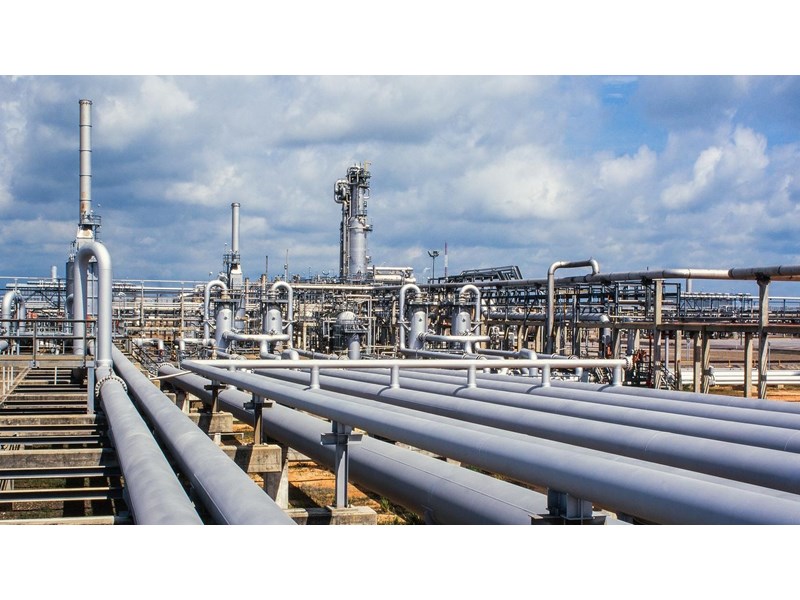Sign up today to get the best of our expert insight in your inbox.
Three steps to secure Asia’s LNG future
Asia’s gas markets must evolve to unlock their growth potential
4 minute read
Simon Flowers
Chairman, Chief Analyst and author of The Edge

Simon Flowers
Chairman, Chief Analyst and author of The Edge
Simon is our Chief Analyst; he provides thought leadership on the trends and innovations shaping the energy industry.
Latest articles by Simon
-
The Edge
Upstream’s mounting challenge to deliver future oil supply
-
The Edge
A world first: shipping carbon exports for storage
-
The Edge
WoodMac’s Gas, LNG and the Future of Energy conference: five key themes
-
The Edge
Nigeria’s bold strategy to double oil production
-
The Edge
US tariffs – unpredictability is the strategic planners’ nightmare
-
The Edge
US upstream gas sector poised to gain from higher Henry Hub prices
Gavin Thompson
Vice Chairman, Energy – Europe, Middle East & Africa

Gavin Thompson
Vice Chairman, Energy – Europe, Middle East & Africa
Gavin oversees our Europe, Middle East and Africa research.
Latest articles by Gavin
-
The Edge
A world first: shipping carbon exports for storage
-
The Edge
WoodMac’s Gas, LNG and the Future of Energy conference: five key themes
-
The Edge
Nigeria’s bold strategy to double oil production
-
The Edge
US tariffs – unpredictability is the strategic planners’ nightmare
-
The Edge
Upside pressure mounts on US gas prices
-
The Edge
The coming geothermal age
Massimo Di Odoardo
Vice President, Gas and LNG Research

Massimo Di Odoardo
Vice President, Gas and LNG Research
Massimo brings extensive knowledge of the entire gas industry value chain to his role leading gas and LNG consulting.
Latest articles by Massimo
-
Opinion
Dynamics shaping the European natural gas market
-
Opinion
The impact of the Israel-Iran conflict escalation on the global energy market
-
Opinion
Gas, LNG & The Future of Energy: investment momentum builds in a volatile market
-
The Edge
WoodMac’s Gas, LNG and the Future of Energy conference: five key themes
-
The Edge
Upside pressure mounts on US gas prices
-
Opinion
Video | Lens Gas & LNG: Will Russian gas and LNG come back?
With Europe still scrambling to replace Russian gas, the LNG industry is going through yet another boom cycle. But Europe’s importance as a demand centre will fade in the long term as policy makers remain determined to move away from gas. Asia needs to retake centre stage for players across the LNG value chain to continue to thrive.
Security of supply, price competitiveness and decarbonisation are all key priorities across Asia, and LNG can play an essential role in achieving these. But Asia’s gas markets must evolve to unlock their growth potential. Ahead of next week’s Gastech event in Singapore, Gavin Thompson, Vice Chair APAC, and Massimo Di-Odoardo, Vice President, Gas and LNG Research, identify three key actions Asian governments, gas players and investors should consider.
1. Recognise a cost for greenhouse gases (GHG) emissions
With coal still dominant in most of Asia’s developing economies, addressing CO2 emissions and overall levels of air pollution is an increasing priority.
Recognising an appropriate cost for carbon emissions is the most efficient way to move away from coal and prioritise use of low-carbon technologies. There is a blueprint – Europe’s restrictions on particulate emissions and the introduction of carbon prices have halved coal-fired generation’s share to 15% in the past 10 years. For Asia’s developing economies, pricing carbon and restricting particulate emissions will make governments and utilities think twice about adding new coal capacity.
Renewables are set to be the biggest winner, but gas has a key role to play in achieving emissions reduction through substituting coal and providing flexibility to intermittent renewables. A cost on carbon will also ensure gas positions itself as the most efficient fuel for future efforts to capture CO2 emitted in the power and industrial sector. Carbon hubs will then likely follow.
Small steps are already being made, with carbon pricing regimes emerging in several markets and Asia’s first cross-border carbon capture initiatives progressing. But these alone will not be enough to support future LNG demand growth. Overall, Asia’s modest efforts to place a cost on carbon emissions leave it a long way from providing appropriate price signals to move away from coal. Given price sensitivity in several Asian markets and the abundance of low-cost coal, Asia must demonstrate a clearer commitment to price carbon if it is to support gas.
2. Accelerate gas market reforms
Many Asian gas and LNG markets remain dominated by state-owned companies. And while these companies will continue to be behind much of Asia’s gas infrastructure and contracting, the next phase of growth will need significant levels of private capital from domestic and international players. We have promoted the benefits of gas sector liberalisation in Asia for some time, but progress remains slow. Governments still need to gradually ease regulated prices to ensure consumers pay a fair and transparent price for gas, define clear distinctions between suppliers and infrastructure players, and establish a level playing field for suppliers to access capacity and buyers.
There are some positive developments. The creation of PipeChina has helped third-party access to the country’s gas infrastructure, supporting a new wave of LNG buyers. In India, partnerships between the NOCs and Big Oil are helping to expand access to gas across the country.
But again, much more must be done. A continued push to liberalise markets will support the pace of investment in essential infrastructure and widen the options for LNG contracting beyond a limited number of NOCs. It will also support the timely development of future gas supply.
3. Develop regional gas hubs
Asia has long been the dominant LNG demand region, with 250 mmtpa of demand and more than 60% of the global LNG market, despite Europe’s recent surge in LNG imports. But most of its markets are dominated by oil-indexed long-term contracts, which have long provided market stability but failed to give the appropriate price signals to better move LNG where it’s needed. Consequently, Europe’s TTF has emerged as the global LNG pricing benchmark, even before the current crisis boosted European demand for spot LNG.
As it evolves, Asia must develop a set of regional gas hubs that can offer liquidity and financial instruments to help players trade LNG efficiently. China has long had most of the ingredients to become an Asian pricing and flexibility hub. Like Europe, its supply consists of domestic production and imported gas and LNG, while competition between gas, coal and oil products is also emerging. Increasingly, these will define local price formation. But hub developments across other Asian markets must also be created to move LNG more efficiently where needed. Asia doesn’t have to follow Europe to the letter – it’s never going to be a liquid interconnected market following the same EU-designed trading rules. But more coordination across governments will be required if Asia is to establish itself as the centre of global LNG trading.
Wood Mackenzie is once again delighted to be the official knowledge partner for Gastech and to be hosting the Leadership Roundtable debates at the Gastech Energy Club. We look forward to meeting you in Singapore next week.










